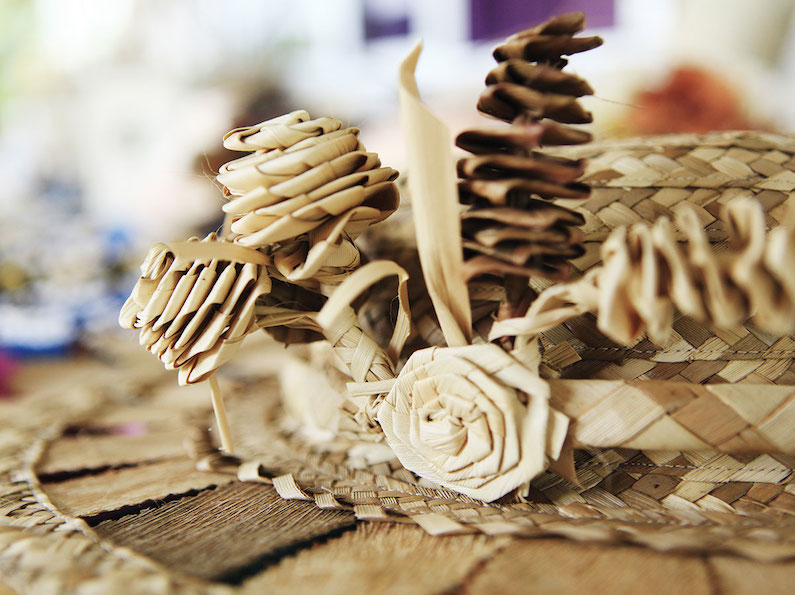
Tahitian handicrafts and its islands

Tahitian handicrafts and its islands harmoniously combines the sense of beauty and the sense of usefulness
The manual skills and the creativity of the Polynesians are no longer to be demonstrated. It is a people who have always known how to use the materials and products of their insular environment, yet cut off from the world. They even appropriated techniques and know-how come from elsewhere (with the eloquent example of patchwork or “tifaifai»). Such inventiveness and resourcefulness are already remarkable in themselves. If we add to that the fact that the Polynesians always have had the sense of what is beautiful, then we are faced with an atypical – if not unique – culture in which the concern for the “functional” has never hindered the creativity and the search for the beauty in all forms of work. Where is the boundary between Polynesian crafts and Polynesian art? It is difficult to answer this question as the two are intimately and indissociably linked to each other: what serves something must be beautiful and the converse is often true … The functional vocation of a craft object does not free it from the obligation to be beautiful or at least pleasant to look at. And the beauty of an object does not exempt it from the obligation to be truly useful and functional. This is a strong feature of the Polynesian soul which, in all its labors and actions, maintains this sacred link between everyday life and the spirit life, as between what is daily and what is eternal …
This remarkable “sense of the beautiful” in all things created by the hand of man is a constant: Polynesian sculpture is striking because of the high inspirations it reveals, the stretched and stripped form of the canoes is by itself, an allegory. The Polynesians of the past made beautiful and functional objects that really served in everyday life: fishing, hunting, war, preparation of meals and so on.
The skill of the Polynesians and the profusion of handicrafts have survived to the present day: It is estimated that the crafts sector currently occupies more than 10,000 craftsmen. The sector provides vital income to nearly 40,000 people, should we also consider the families of the craftsmen; which equates to about 15% of the population of our islands … Crafts are therefore “one of the lungs” of the local microeconomy, as they indirectly contribute to the preservation of the traditional family economy. But crafts also represent a powerful factor of homogeneity and social cohesion insofar as they allow an important part of the Polynesian cultural heritage to survive and continue to flourish …
The offer for handicrafts is plethoric and extremely diversified. And the quality level of productions is always high. Each of the archipelagos is traditionally specialized in one specific productions line (sailing canoes from Bora-Bora, sculptures and tikis from Marquesas, shell necklaces from the Tuamotu Islands, and fine basketry from Austral Islands). The sculpture on mother-of-pearl deserves special mention due to both a notable evolution of the techniques and the high level of creativity of recent achievements. The Polynesian sculpture on stone or on wood produces creations of striking beauty, to the point that you may well feel under the impression of contemplating or holding in your hands some “living” and inhabited object … The farandole of colors deployed by patchworks (“tifaifai “) really catches the eye while forcing the admiration … The sensual and mysterious gleams of these black pearls necklaces projecting their enigmatic “orient” are irresistible … Without forgetting the suave freshness of these splendid crowns made of flowers (flowers necklaces or flowers head crowns) of which hypnotic perfume will remain in your memories and in your hearts until your last day … Yes, our rich, prolific, creative and highly inspired handicraft is worth the trip and would even deserve your flying to Tahiti and her islands just for it…
















